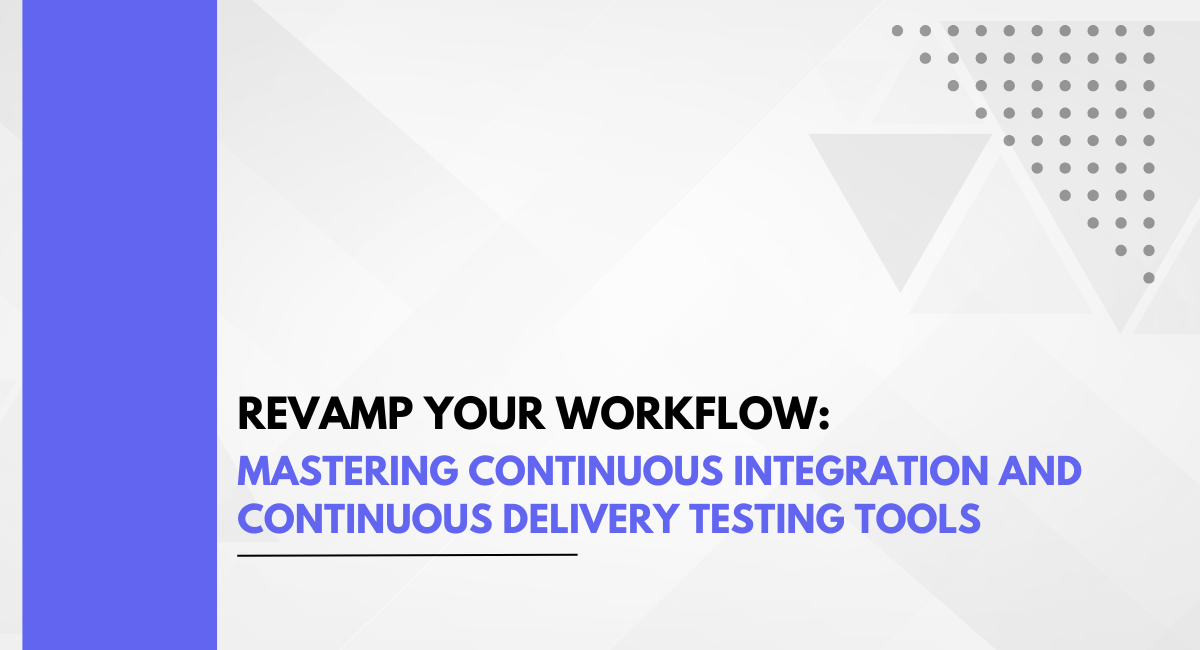Companies that can swiftly and efficiently deliver high-quality software gain a significant competitive edge. The key to achieving this lies in optimizing their Continuous Integration and Continuous Delivery (CI/CD) pipeline. Here, we will outline the essential steps to refine your CI/CD workflow, leveraging continuous integration and continuous delivery testing tools.
1. Set Clear Goals and Objectives in Continuous Integration and Continuous Delivery Testing Tools
Before starting the optimization journey, it is essential to define what success looks like for your organization. Set clear goals and objectives that align with your business needs and technical capabilities. For instance, you might aim to reduce build times by 30%, improve test coverage by 20%, or enhance deployment frequency to meet customer demands. By setting measurable targets, you create a roadmap for optimization that guides every step of the process.
2. Optimize Build Times
Optimizing build times involves several strategies. One key approach is to parallelize tasks where possible. Tools like Jenkins or CircleCI can handle multiple tasks concurrently, reducing the overall build time significantly. Another strategy is to leverage caching mechanisms for dependencies and intermediate files, which can save time by reusing previously computed results.
3. Implement Comprehensive Testing
Testing is a critical component of any CI/CD pipeline, ensuring that each build is stable and functional. Static code analysis tools like SonarQube or Codeclimate help identify coding issues early in the development cycle. Automated unit testing frameworks such as JUnit or PyUnit ensure that individual units of code behave as expected. Additionally, integration tests using tools like Cucumber or Behave verify how different components interact with each other.
4. Improve Feedback Loops
One of the most significant advantages of CI/CD is the continuous feedback loop it provides. By integrating automated testing into your pipeline, you receive immediate feedback on any issues that arise during the build and deployment process. This enables developers to quickly identify and address problems, reducing the time spent on debugging and improving overall productivity. Real-time feedback tools like GitHub Actions or GitLab CI/CD can automate this process further.
5. Enhance Deployment Practices
Deployment involves managing rollbacks and rollouts effectively. Tools like Kubernetes provide robust deployment mechanisms that allow for blue-green deployments or canary releases, ensuring minimal disruption to production services. Implementing these strategies helps in minimizing downtime and improving user experience.
6. Monitor and Analyze Performance
Finally, continuous monitoring is essential for maintaining optimal performance over time. Using tools like Prometheus or Grafana for monitoring key metrics such as latency, error rates, and system resource utilization helps in identifying bottlenecks early on. By analyzing performance data regularly, teams can make informed decisions about scaling infrastructure or fine-tuning their testing strategies.
Optimizing your CI/CD pipeline requires a multi-faceted approach that spans from setting clear goals to continuous monitoring and analysis. By implementing strategies like parallel processing for builds, comprehensive testing using various tools, improving feedback loops through automation, enhancing deployment practices with tools like Kubernetes, and regularly monitoring performance metrics, organizations can significantly improve their ability to deliver high-quality software rapidly and reliably.
In today's fast-paced technological landscape where competition is fierce and customer expectations are high, leveraging the right CI/CD testing tools can be the difference between success and stagnation. By following these six essential steps outlined above, organizations can ensure their pipelines are not only efficient but also resilient against the ever-changing demands of software development.
You may also be interested in: Test Automation Framework Best Checklist 2024
Book a Demo and experience ContextQA testing tool in action with a complimentary, no-obligation session tailored to your business needs.
We make it easy to get started with ContextQA tool: Start Free Trial.
